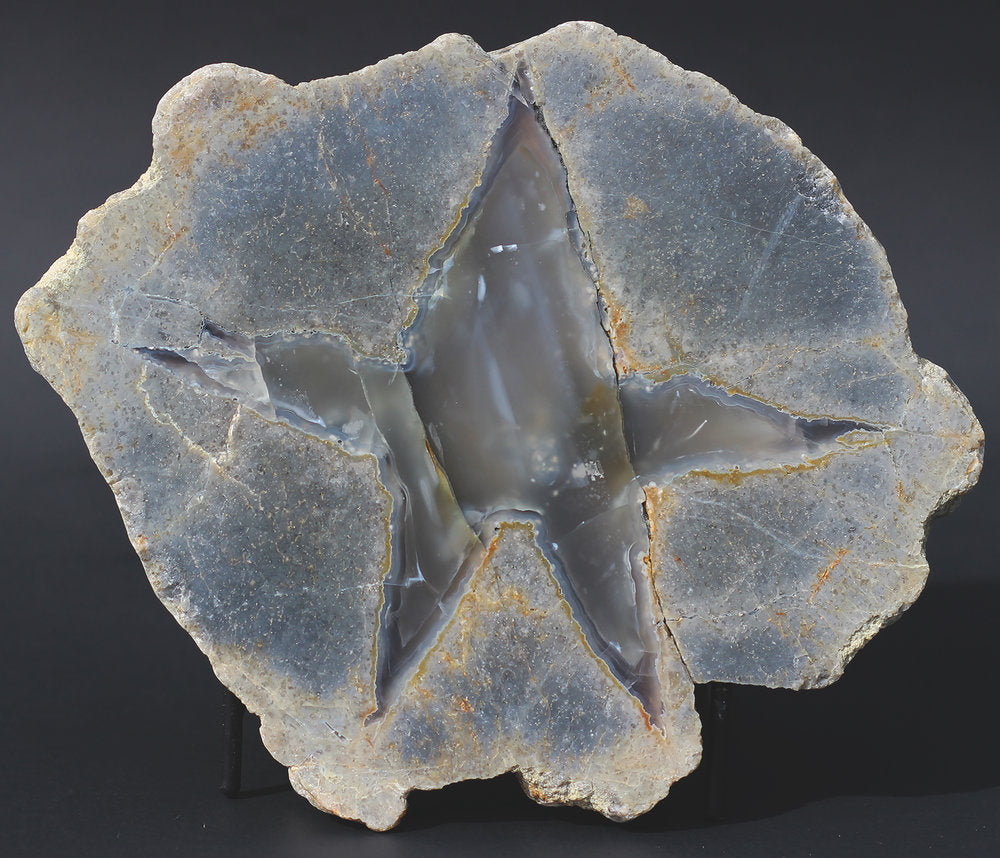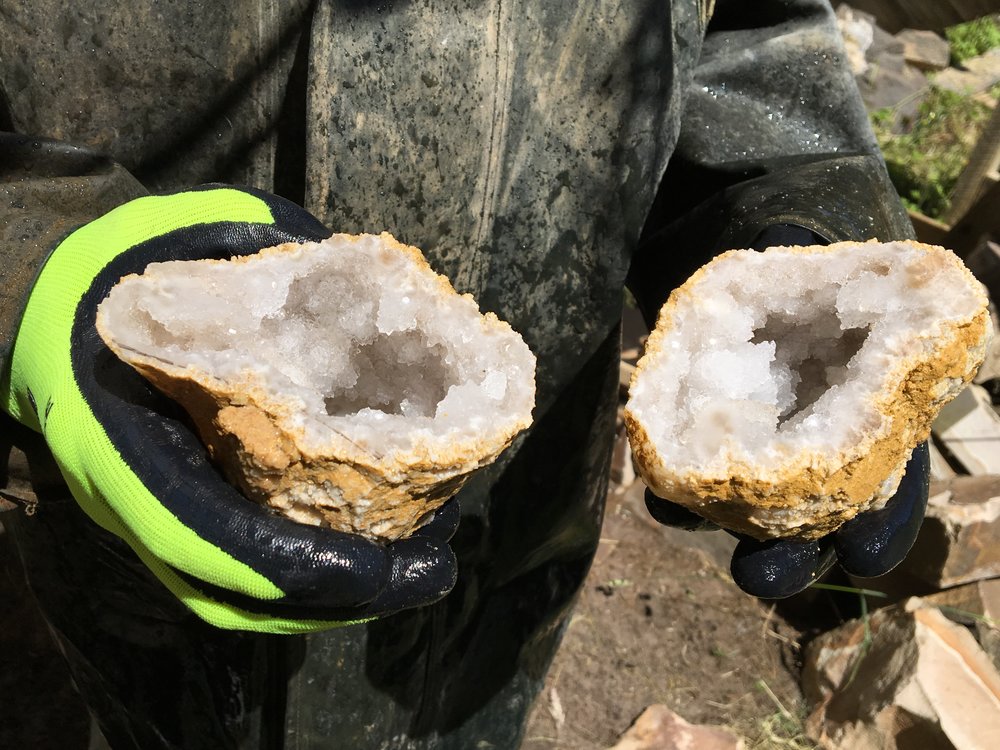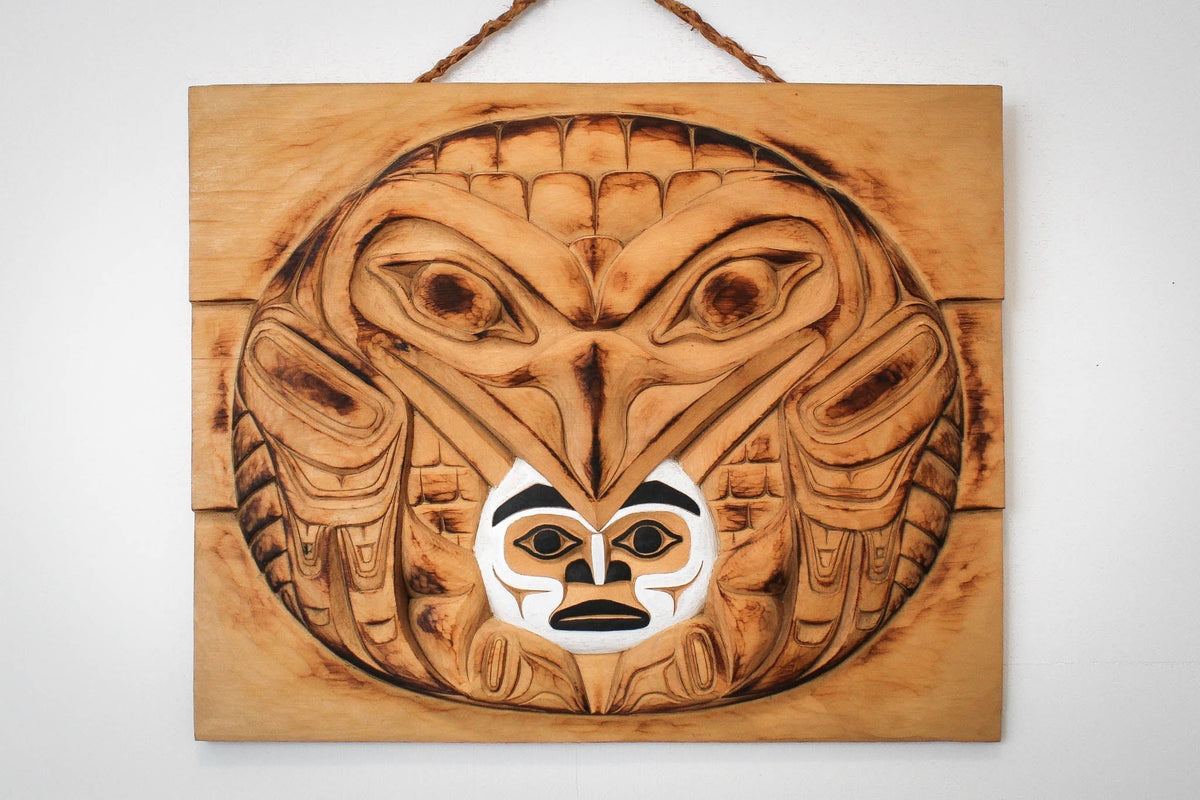Your Cart is Empty
This thunder egg from Haida Gwaii, called Star Spirit, has a solid interior of blue and grey chalcedony.
Thunder eggs and geodes are sought-after by collectors and novices alike. Both are round and reveal beautiful interiors, however, there are some distinct differences between these two types of specimens.
Thunder eggs, which are technically known as lithophysae are typically found with solid or near-solid cores of chalcedony or agate, whereas geodes are relatively hollow inside with thinner layers of quartz crystals.
Thunder Egg Formation
Thunder eggs are spherical concretions of solid or near-solid nodules filled with chalcedony, agate or quartz crystals. Crystal Cabin's Star Spirit Thunder Eggs from Haida Gwaii are formed in ash beds in the top sections of silica-rich rhyolitic lava flows. Generally, the formation of thunder eggs seems to be more common in the gas-charged ignimbrite eruptions.
As volcanic lava cools, a shell forms within the rhyolite ignimbrite around trapped gas bubbles. Flow-lines found throughout the ignimbrite are preserved in the shell. Compaction over millions of years causes these gas bubbles to eventually crack the rhyolitic shell and allows the gas or liquid to escape. This leaves behind a hollow cavity. Heated ground water leaches silica and other impurities from volcanic ash and deposits them into the cavity. The watery solution slowly turns to gel, but first creates a silica layer in the innermost core. The gel eventually hardens to deposit chalcedony, agate, quartz crystals, or a combination of these minerals. These minerals form the core of a thunder egg.










Michael Sean Curtis
January 07, 2025
I love rocks!